British Geological Survey
Type of resources
Available actions
Topics
Keywords
Contact for the resource
Provided by
Years
Formats
Representation types
Update frequencies
Service types
Scale
Resolution
-
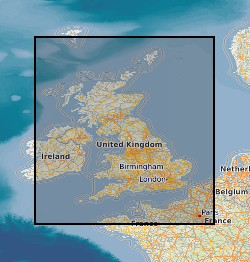
The Quaternary deposits thickness dataset is a digital geological map across the bulk of the UK Continental Shelf (UKCS), for areas up to a water depth of 200m, which shows the thickness of the deposits over bedrock in three categories: <5m, 5-50m, and >50m Quaternary cover. These depth bands were picked because they represent the horizons that have impact on offshore infrastructure deployment. The map is derived from (unpublished) BGS 1:1000000 scale Quaternary digital geological mapping. The map was produced in 2014 in collaboration with, and co-funded by, The Crown Estate as part of a wider commissioned project to assess seabed geological constraints on engineering infrastructure across the UKCS. The data are held by the BGS as an ESRI ArcGIS Shapefile.
-

These files contain ground penetrating radar (GPR) data collected from the glacier margins and forelands of Falljökull and of Kvíárjökull, south-east Iceland, between 2012 and 2014. The data were collected using a Sensors and Software PulseEKKO Pro GPR system. For each glacier the data are stored in folders that indicate the month and year in which the surveys were conducted. Each GPR profile has a Sensors and Software GPR (.DT1) file, and associated header (.HD) and GPS (.GPS) files. The .HD files (which can be opened as text files) give the parameters and equipment used for each profile. GPS files are not available for some of the profiles collected on Falljökull in April 2013 (due to damage that occurred to the GPS linked with the PulseEKKO Pro system). For these profiles start, finish, and mid profile positions were recorded using differential GPS, and locations of these profiles are instead given by GIS shapefiles in the relevant folders. These datasets have been used in the publications listed below. Further information relating to the data collection methodology can be found therein. Phillips, Emrys; Everest, Jez; Evans, David J.A.; Finlayson, Andrew; Ewertowski, Marek; Guild, Ailsa; Jones, Lee. 2017 Concentrated, ‘pulsed’ axial glacier flow: structural glaciological evidence from Kvíárjökull in SE Iceland. Earth Surface Processes and Landforms, 42 (13). 1901-1922. https://doi.org/10.1002/esp.4145 Phillips, Emrys; Finlayson, Andrew; Bradwell, Tom; Everest, Jez; Jones, Lee. 2014 Structural evolution triggers a dynamic reduction in active glacier length during rapid retreat: evidence from Falljökull, SE Iceland. Journal of Geophysical Research: Earth Surface, 119 (10). 2194-2208. https://doi.org/10.1002/2014JF003165 Phillips, Emrys; Finlayson, Andrew; Jones, Lee. 2013 Fracturing, block-faulting and moulin development associated with progressive collapse and retreat of a polar maritime glacier: Virkisjokul-Falljokull, SE Iceland. Journal of Geophysical Research: Earth Surface, 118 (3). 1545-1561. https://doi.org/10.1002/jgrf.20116 Flett, Verity; Maurice, Louise; Finlayson, Andrew; Black, Andrew; MacDonald, Alan; Everest, Jez; Kirkbride, Martin. 2017. Meltwater flow through a rapidly deglaciating glacier and foreland catchment system: Virkisjökull, SE Iceland. Hydrology Research, 48 (6). 1666-1681. https://doi.org/10.2166/nh.2017.205
-
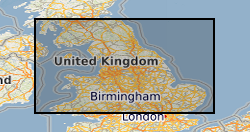
This is a simple Oracle table holding sample numbers, locations (UK National Grid) and illite crystallinity values measured for pelitic (mudrock) samples from Lower Palaeozoic terranes in the UK. Though intended for use by a BGS collaborative project with Birkbeck College, London, data may be made available to others on request.
-
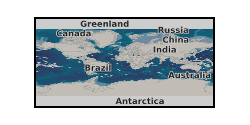
This is one of the early papers on CO2 storage. Natural analogues indicate that it is possible to dispose of CO2 underground in closed structures on deep aquifers. Disposal into depleted or exhausted hydrocarbon fields has many advantages, e.g. proven seal, known storage capacity, no exploration costs. Unfortunately there are very few hydrocarbon fields in the UK onshore area, and their total CO2 storage capacity is very low compared to annual UK CO2 production from power generation. The best aquifers for CO2 disposal onshore are the widespread Permo-Triassic sandstones. Further onshore potential exists in younger Mesozoic reservoirs. Offshore, disposal into depleted oil fields (where cost credits from enhanced oil recovery could be beneficial) or the Perno-Triassic gas fields of the southern North Sea, and nearby associated closures of the Triassic Sherwood Sandstone aquifer, appear to provide the best prospects. doi:10.1016/0196-8904(93)90038-C. http://www.sciencedirect.com/science/article/pii/019689049390038C
-

The BGS collection of 1:10 560 / 1:10 000 National Grid Series geological maps. These maps are based on the Ordnance Survey National Grid series of maps, which are defined by the 10 km intervals of the larger 100 km square identified by a specific two-letter code. Each map is thus denoted by a unique reference, e.g. SP 29 NW. SP=100 km square; 29=10 km square; NW=5 km square. Since field mapping is generally undertaken at the scale of 1:10 000 (or equivalent), these maps are the largest-scale main series of geological maps that BGS holds. A small number of remote areas were mapped at 1:25 000 scale, the subsequent maps are also at 1:25 000 scale and are included in this series. The equivalent to the National Grid Series prior to the 1960s is the County Series (at 1:10 560 scale). In the 1960s, this series started to be replaced by 6 inches to 1 mile (1:10 560 scale) National Grid sheets based on the four quadrants (NW, NE, SW, SE) of a 10 km Ordnance Survey National Grid square. Areal coverage provided by the National Grid series of large-scale maps is limited in extent and the preceding County series of six-inch maps can still be the most up to date map available for some areas. Geological maps represent a geologist's compiled interpretation of the geology of an area. A geologist will consider the data available at the time, including measurements and observations collected during field campaigns, as well as their knowledge of geological processes and the geological context to create a model of the geology of an area. This model is then fitted to a topographic basemap and drawn up at the appropriate scale, with generalization if necessary, to create a geological map, which is a representation of the geological model. Explanatory notes and vertical and horizontal cross sections may be published with the map. Geological maps may be created to show various aspects of the geology, or themes. The most common map themes held by BGS are solid (later referred to as bedrock) and drift (later referred to as superficial). These maps are, for the most part, hard-copy paper records stored in the National Geoscience Data Centre (NGDC) and are delivered as digital scans through the BGS website.
-
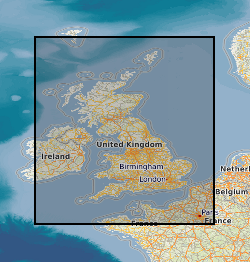
The Quaternary deposits summary lithologies dataset is a digital geological map across the bulk of the UK Continental Shelf (UKCS), for areas up to a water depth of 200 m, which groups the deposits into classes based on similar engineering geology characteristics. The map is derived from (unpublished) BGS 1:1,000,000 scale Quaternary digital geological mapping, so is effective at that scale. The map was produced in 2014 in collaboration with, and co-funded by, The Crown Estate as part of a wider commissioned project to assess seabed geological constraints on engineering infrastructure across the UKCS. The divisions on the map combine the Quaternary deposits into 7 categories of similar strength and lithological variability, each with a ‘Category’ title that summarises their main lithological character: diamict; firm to hard interbedded (layered); firm to hard mud; sand and gravel; soft interbedded; soft mud; undifferentiated. These categories can be used as a basis for assessing, in conjunction with a range of other geological factors, the geological constraints on engineering structures at or close to the seabed. The data are held by the BGS as an ESRI ArcGIS Shapefile.
-
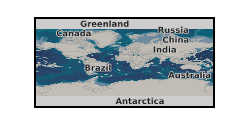
The World Magnetic Model (WMM), produced jointly with the US National Oceanographic and Atmospheric Administration's National Geophysical Data Center, is the standard model in UK Ministry of Defence and US Department of Defense navigation and attitude reference systems and is also used widely in civilian navigation systems. The model is also used on marine and aviation charts and is revised every five years.
-

For much of the Geological Survey's existence, the County Series of maps were the standard large-scale maps on which geological mapping was undertaken. These maps are based on the Ordnance Survey County (or six-inch to the mile) series of maps. These maps were cut up to be used in the field to record geological observations, and on return to the office, the geology was transferred to a complete County Series map, which after approval was known as a 'standard' (England / Wales) or 'clean copy' (Scotland). This dataset contains the 'standard' or 'clean copy' County Series maps held by BGS. Geological maps represent a geologist's compiled interpretation of the geology of an area. A geologist will consider the data available at the time, including measurements and observations collected during field campaigns, as well as their knowledge of geological processes and the geological context to create a model of the geology of an area. This model is then fitted to a topographic basemap and drawn up at the appropriate scale, with generalization if necessary, to create a geological map, which is a representation of the geological model. Explanatory notes and vertical and horizontal cross sections may be published with the map. Geological maps may be created to show various aspects of the geology, or themes. The most common map themes held by BGS are solid (later referred to as bedrock) and drift (later referred to as superficial). These maps are hard-copy paper records stored in the National Geoscience Data Centre (NGDC) and are delivered as digital scans through the BGS website.
-
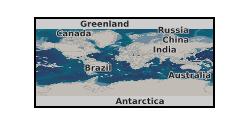
This presentation on the EPSRC project, CONTAIN, was presented at the Cranfield Biannual, 21.04.15. Grant number: EP/K036025/1.
-
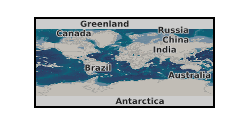
The UK is committed to meeting stringent carbon dioxide emission targets over the next 35 years. One potentially valuable technology in achieving this target is the development of Carbon Capture and Storage (CCS) technologies, where carbon dioxide is captured during power generation and, instead of being released into the atmosphere, is injected into porous rocks underground. Porous rocks, such as sandstone, can act as a 'reservoir' for CO2, which can potentially be stored at depth over long periods of time and kept isolated from the rocks above by a much less porous 'caprock'. The UK has a large 'porosity resource', currently estimated to be of sufficient capacity to store the necessary 2-5 billion tonnes of CO2 to meet 2050 CO2 emission targets. It has been estimated that up to 9 billion tonnes of UK storage capacity come from reservoirs that previously contained hydrocarbons, which have been extracted by the oil and gas industry. This form of CO2 storage has a number of benefits, as the rocks are generally well characterised and there may be pre-existing infrastructure (such as pipelines) suitable for adaption to CO2 injection. However, the process of hydrocarbon extraction, or 'depletion', can significantly impact both the reservoir involved and the surrounding rocks. These activities can potentially cause deformation, movement on faults and/or damage to infrastructure. However, the long term impacts of these activities, particularly when the reservoir is 're-inflated' during injection of CO2, are not well understood and there is limited physical data for specific rock types and scenarios. In order for depleted reservoirs to become a viable national resource, these uncertainties must be addressed. As such, this project is focussed on providing a better understanding of the impact of depletion and reinflation on reservoir and caprock material. It will involve a combined approach, using both laboratory experiments and computer simulation to improve our understanding of this aspect of storage site behaviour. The project seeks to address this key area with a focussed programme of work that will generate a much-needed and unique data-set, new modelling tools and a fuller understanding of the processes involved. The findings will inform regulators and aid operators in reducing the financial and environmental risks of CCS, for depleted storage sites, making the technology more likely to happen. In addition, work will be carried out to examine effective communication with the public, relating to this new technology. Social acceptability represents a major potential barrier to CCS developments, as indicated by protests and moratoria in several countries. It is therefore critical to understand public attitudes and the bases of concern about CCS, and work as effectively as possible to improve understanding and engagement. Work within this project will explore the factors that determine public and stakeholder understanding and acceptability of CCS storage proposals. The lessons and knowledge derived from this work will be summarised in an outreach and engagement toolkit, which will be disseminated to regulators, operators and communication specialists. Grant number: EP/K036025/1.
 NERC Data Catalogue Service
NERC Data Catalogue Service